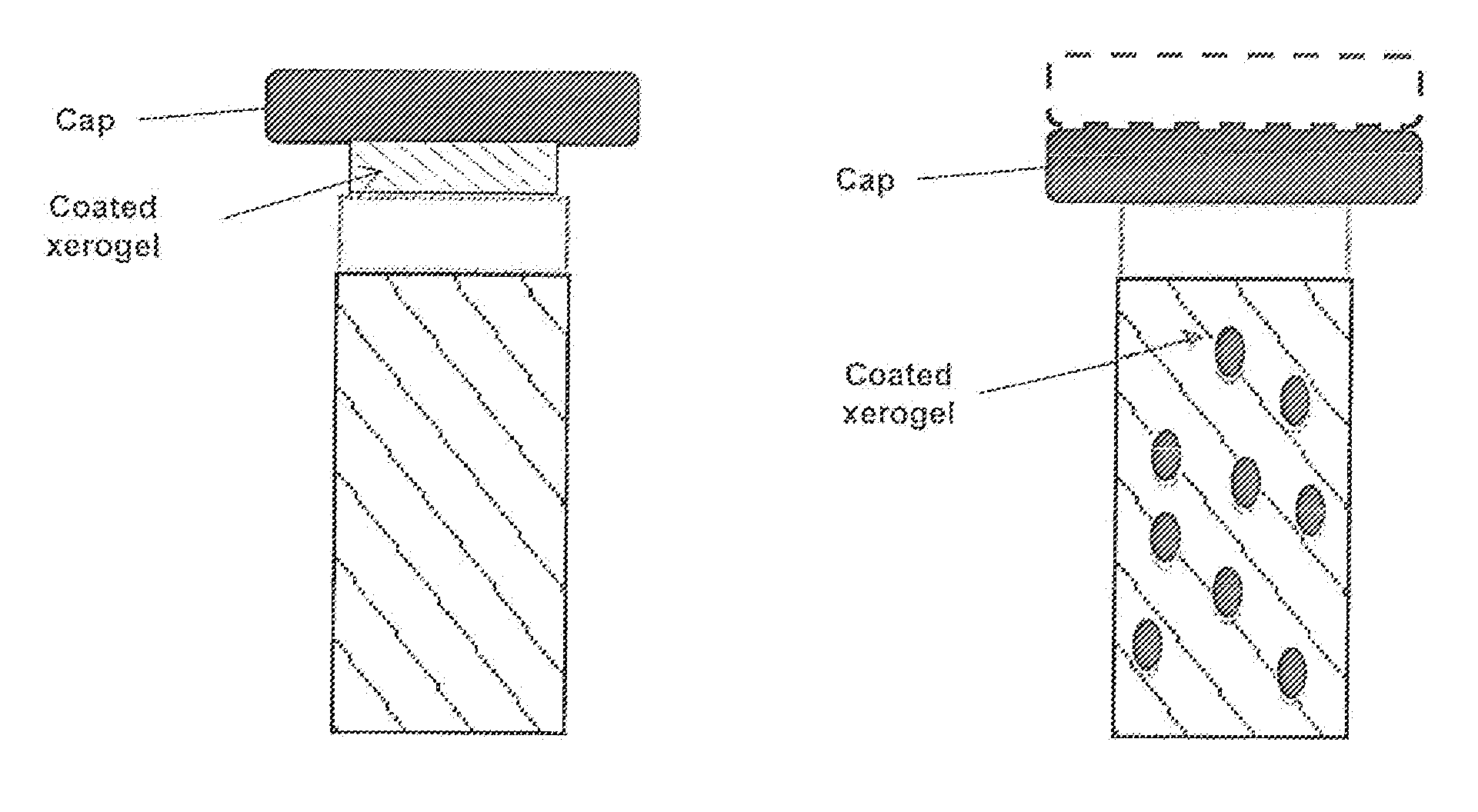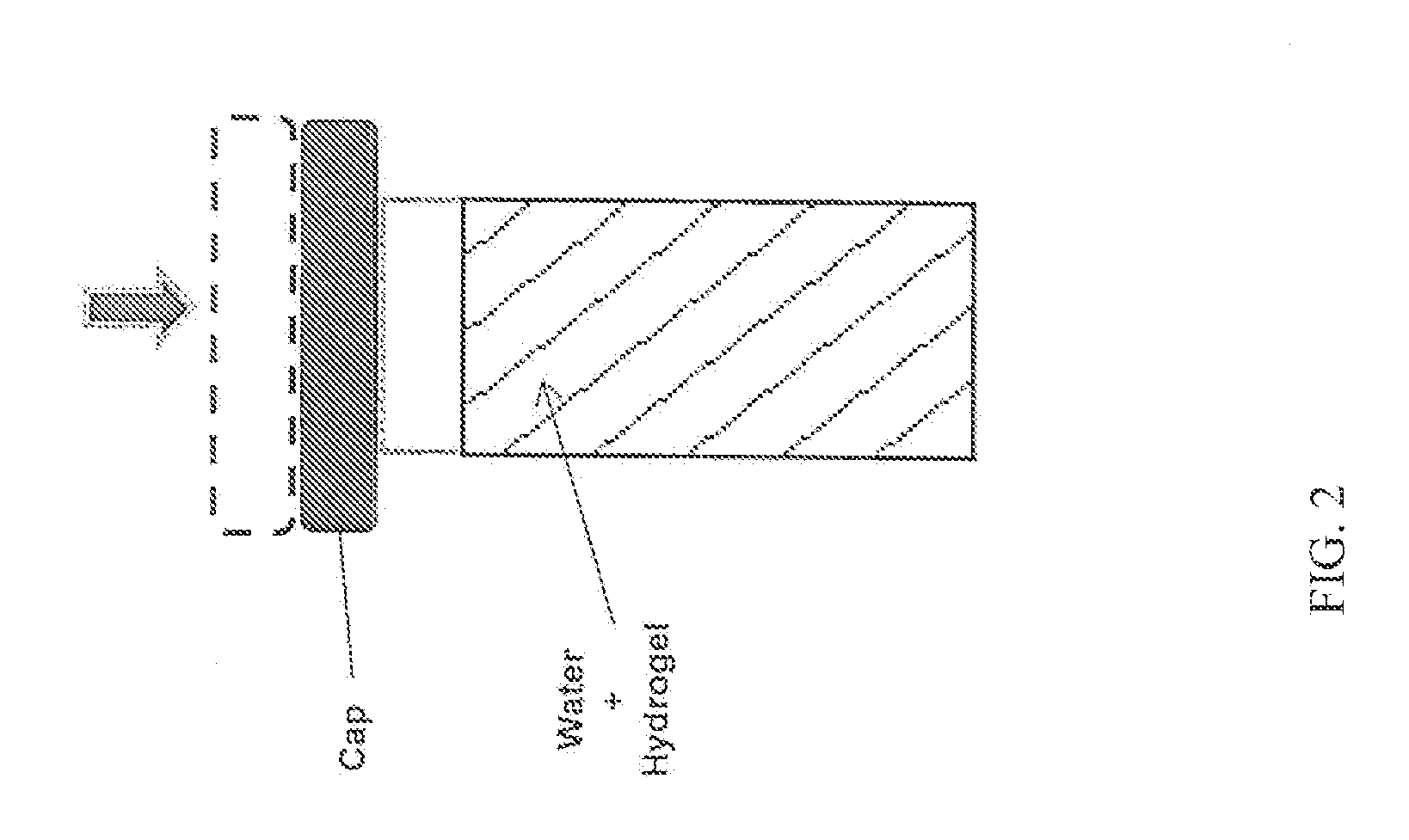Methods and compositions for weight management and for improving glycemic control
a glycemic control and weight management technology, applied in the field of prevention and treatment of obesity, weight management and diabetes, can solve the problems of obesity not controlling the obesity epidemic, reducing life expectancy, and affecting health, so as to improve glycemic control, improve satiety, and reduce food intake
- Summary
- Abstract
- Description
- Claims
- Application Information
AI Technical Summary
Benefits of technology
Problems solved by technology
Method used
Image
Examples
example 1
Citric Acid Cross-Linking of Carboxymethylcellulose / Hydroxyethylcellulose Mixtures
Materials
[0177]Carboxymethylcellulose sodium salt (CMCNa, MW 700 kDa, DS 0.9, food grade), HEC (MW 250 kDa, food grade) were purchased from Eigenmann e Veronelli S.p.A. Milano and citric acid was supplied by Dal Cin S.p.A. Sesto San Giovanni Milano and used as received.
Edible polymer hydrogel Synthesis
[0178]Edible polymer hydrogel samples were obtained by reacting CMCNa and HEC with citric acid as a cross-linking agent in water according the following procedure. First, a total polymer concentration of 2% by weight of water, using a mixture of CMCNa and HEC with weight ratio equal to 3 / 1 was dissolved in distilled water by gently stirring at room temperature until a clear solution was obtained. (Poor cross-linking efficiency has been reported if only CMCNa is used, due both to the electrostatic repulsion between polyelectrolyte chains and to the high degree of substitution of hydroxyl groups at C6, the ...
example 2
Citric Acid Cross-Linking of Carboxymethylcellulose and Carboxymethylcellulose / Hydroxyethylcellulose Mixtures in the Presence of a Molecular Spacer
Materials and Methods
[0204]All the materials employed were provided by Aldrich Italia and used without any further modification. The devices used in the characterization, were a scanning electron microscope (SEM) JEOL JSM-6500F, a precision 10−5 g Sartorius scale, an Isco mixer and an ARES rheometer, in addition to the standard laboratory glassware, cupboards and counters for standard synthesis.
[0205]The edible polymer hydrogels were prepared by cross-linking an aqueous solution of carboxymethylcellulose sodium salt (CMCNa) and hydroxyethylcellulose (HEC), using citric acid (CA) as the cross-linking agent and sorbitol as the molecular spacer. The composition of a gel is given by the nominal amount of the reagents in the starting solution. The parameters used to define said composition are the following:
(i) the precursor weight concentrati...
example 3
Swelling of an Edible Polymer Hydrogel in Simulated Gastric Fluid (SGF) and SGF / Water Mixtures
[0226]This example describes an evaluation of the superabsorbent edible polymer hydrogel denoted edible polymer hydrogel B in Example 2 in in vitro swelling and collapsing experiments in various media at 37° C.
Swelling Kinetics (in 100% SGF) at 37° C.
[0227]100 mg of the dried edible polymer hydrogel was immersed in either simulated gastric fluid (“SGF”) or a mixture of SGF and water and allowed to swell until an equilibrium condition was reached. SGF was prepared according to USP Test Solutions procedures. The swelling ratio in each fluid was determined at various time points. The results are set forth in Tables 5 and 6.
TABLE 5Swelling of dry edible polymer hydrogel B in 100% SGF at 37° C.Swelling TimeSwelling Ratio(min.)(g / g)1515.43015.66016.29015.1
TABLE 6Swelling of Dry edible polymer hydrogel B ina mixture of SGF and Water (1:8) at 37° C.Swelling TimeSwelling Ratio(min.)(g / g)1578.83084.6...
PUM
| Property | Measurement | Unit |
|---|---|---|
| elastic modulus | aaaaa | aaaaa |
| elastic modulus | aaaaa | aaaaa |
| volume | aaaaa | aaaaa |
Abstract
Description
Claims
Application Information
 Login to View More
Login to View More - R&D
- Intellectual Property
- Life Sciences
- Materials
- Tech Scout
- Unparalleled Data Quality
- Higher Quality Content
- 60% Fewer Hallucinations
Browse by: Latest US Patents, China's latest patents, Technical Efficacy Thesaurus, Application Domain, Technology Topic, Popular Technical Reports.
© 2025 PatSnap. All rights reserved.Legal|Privacy policy|Modern Slavery Act Transparency Statement|Sitemap|About US| Contact US: help@patsnap.com



